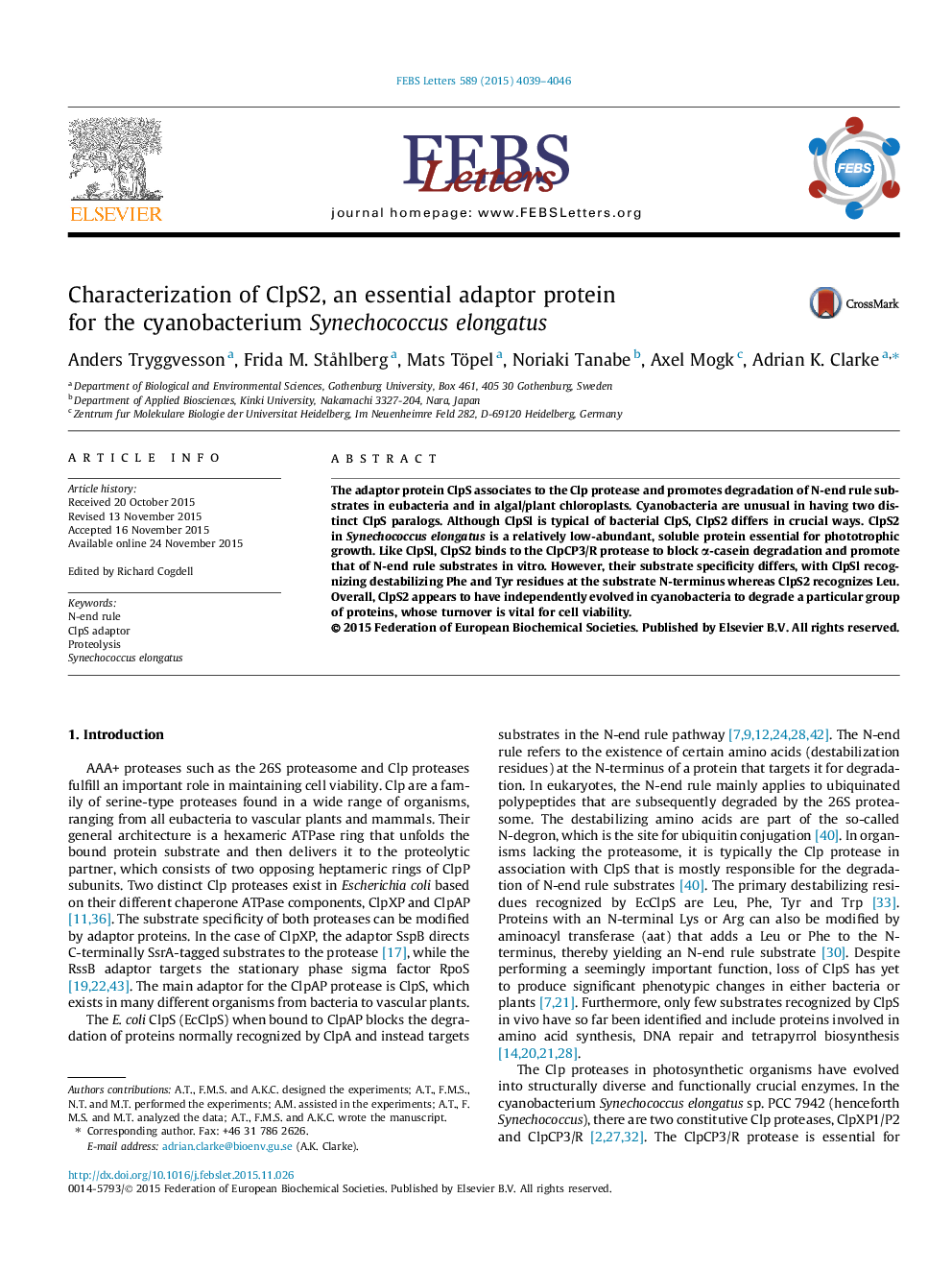| Article ID | Journal | Published Year | Pages | File Type |
|---|---|---|---|---|
| 8384002 | FEBS Letters | 2015 | 8 Pages |
Abstract
The adaptor protein ClpS associates to the Clp protease and promotes degradation of N-end rule substrates in eubacteria and in algal/plant chloroplasts. Cyanobacteria are unusual in having two distinct ClpS paralogs. Although ClpSl is typical of bacterial ClpS, ClpS2 differs in crucial ways. ClpS2 in Synechococcus elongatus is a relatively low-abundant, soluble protein essential for phototrophic growth. Like ClpSl, ClpS2 binds to the ClpCP3/R protease to block α-casein degradation and promote that of N-end rule substrates in vitro. However, their substrate specificity differs, with ClpSl recognizing destabilizing Phe and Tyr residues at the substrate N-terminus whereas ClpS2 recognizes Leu. Overall, ClpS2 appears to have independently evolved in cyanobacteria to degrade a particular group of proteins, whose turnover is vital for cell viability.
Related Topics
Life Sciences
Agricultural and Biological Sciences
Plant Science
Authors
Anders Tryggvesson, Frida M. StÃ¥hlberg, Mats Töpel, Noriaki Tanabe, Axel Mogk, Adrian K. Clarke,
